 While teaching children to practice gratitude can be a bit of a task, the return on investment in their emotional wellbeing is unlimited and long term.
While teaching children to practice gratitude can be a bit of a task, the return on investment in their emotional wellbeing is unlimited and long term.
Making gratitude fun and meaningful can introduce kids to a lifelong appreciation for the world around them and all that it has to offer.
Family practice of gratitude not only teaches children to evoke positive emotions, it also provides opportunities to strengthen bonds within the family unit. Character counts and it starts with gratitude.
Before you continue, we thought you might like to download our three Gratitude Exercises for free. These detailed, science-based exercises will help you or your clients connect to more positive emotions and enjoy the benefits of gratitude.
This Article Contains:
A Gratitude Definition for Kids
The best teachers of gratitude are practitioners of gratitude. Parents, if you are not regularly increasing your own positive emotions through the practice of fully appreciating, how can you possibly expect your kids to begin? Monkey see, monkey do, after all.
There are different categories of gratitude that develop with age (Halberstadt et al., 2018).
Concrete gratitude is the verbal “manners” type of gratitude, like an automatic “thank you” as a recognition of appreciation for something received.
Another type of gratitude is connective gratitude. This type is a fully understood and appreciated receipt of whatever has been given. The appreciation is returned in a meaningful and heartfelt way. For gratitude to increase happiness (Emmons & McCullough, 2003), it must be felt, and connective gratitude is the key.
Teaching kids about gratitude is an important job, and a crucial part is helping children understand that gratitude is more than just saying “thank you.”
Showing a child gratitude in practice can be a powerful way to reinforce the definition. Take the time to demonstrate what it means to pause and appreciate the things we take for granted. Reveal what it is to be fully aware of your own blessings.
Modeling daily gratitude with consistency can help instill an understanding that gratitude is a positive emotion that can be cultivated.
What Is a Gratitude Tree?
Gratitude trees are physical opportunities to encourage the expression of appreciation. They can be drawn, or sculpted on paper, fabric, or even directly on the wall. The trees start barren, and then you fill in leaves with expressions of gratitude over a period of time.
Many of these trees begin to grow around Thanksgiving, but there’s no need to wait for a holiday to start this fun practice.
My family’s gratitude tree began as a paper towel holder. We wrapped burlap around the bottom and used pipe cleaners to create the top of the tree. We then cut out a construction paper tree and crafted it into branches.
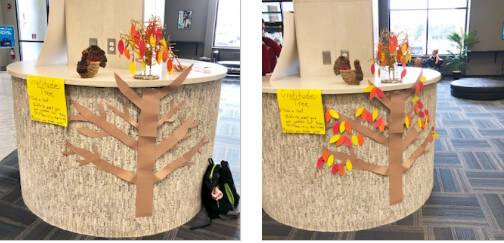
Then we taped the tree to a wall at a local gym (with permission, of course). We cut leaves from different colors of card stock and punched holes in them. After tying a ribbon, gym patrons could grab a blank leaf from the tree to fill out with gratitude and add to the branches.
We posted instructions for the tree next to the barren branches so that people could add their gratitude leaves as they had the time. It was a joyful activity, as the tree grew and people began to include their own children in the fun.
Here are some additional links to some other beautifully made gratitude trees. Getting those creativity juices flowing with those kiddos is a tremendously connective activity. A little bit of effort will yield big results.
- Make It, Love It Gratitude Tree
- A Thanksgiving Tree from Personal Creations
- Make a Gratitude Tree with This Free Printable from Mama Smiles
Gratitude leaves can include prompts, but it is not required. Self-expression and creativity in the words of appreciation can help positive emotions come to the surface and increase connective gratitude.
Gratitude Activities for Kids
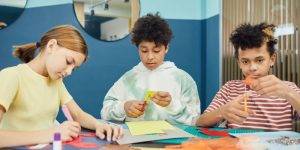
Gratitude journals
A common way to get kids to express gratitude is through a gratitude journal. Having to reflect daily on what they appreciate, gets kids primed for the concept of mindfulness. Having them motivated to reflect quietly can really be the hard part. A great way to get them started is with some gratitude prompts.
Here are a few examples.
- “I am grateful for Mom and Dad when…”
- “I am grateful to learn…”
- “I am grateful to eat…”
- “I am grateful for my favorite…”
If they don’t want to take the time to write down their gratitude, an equally effective way to start the practice is by asking them to share three good things that happened in the last 24 hours.
In addition to the three good things, ask them to share how they contributed to those three good things. Sharing can create a tremendous opportunity to bond with your kids about their day. This becomes especially helpful as kids approach and enter adolescence.
Relevant: 13 Most Popular Gratitude Exercises & Activities
Thank-you notes
Encourage kids to write thank-you notes to important people in their lives, without the receipt of a gift. It is a powerful activity for them to connect with their loved ones in a deeply meaningful way. These high-quality connections are mutually beneficial too. Increasing levels of contentment, happiness, and hope are all benefits enjoyed by those devoting time to practice gratitude (Emmons & Mccullough, 2003).
Gratitude jars and paper chains
Compiling your thankfulness with a gratitude jar or paper chain is a great way to infuse gratitude into a group project. Decorate a jar together, then have each family member put daily entries into the jar. Or, create a color looping paper chain of grateful memories. At the end of the month, everyone can share in the family gratitude project by savoring what was appreciated together.
This project can be expanded to an annual project too. Have each family member add a note about something they’re grateful for each month. Open the gratitude messages on New Year’s Eve and savor the pieces of gratitude from the year.
Gratitude chalkboard
This is a connective daily practice for the family. Imagine the bonding moments when your family simply writes notes of appreciation for everyday things. Adding to the chalkboard can be a spark of surprise throughout the day too. If you don’t want to invest the time or money into a chalkboard, sticky notes do the trick, too.
Gratitude walks
Going on gratitude walks and having quiet respect for nature are active ways to bring mindfulness and appreciation to the forefront of kids’ minds. Adolescents in particular may open up a little more when they’re moving, rather than sitting down to talk, especially with parents.
Teaching children to leave nature for others to enjoy, instead of picking flowers and removing pieces helps kids respect that nature is for everyone. It helps them savor moments outside too. Teaching them to leave no trace is a fantastic rule for them to understand that their behavior matters.
Family gratitude book
A family gratitude book is a very personal way to bring gratitude into the family. It can be included in family meetings and read aloud. Keep a picture of each family member at the front of different sections of a notebook. The family can open the various sections of the book and write down moments they have appreciated that family member.
Creating a deep appreciation for each other is an amazing way to help your children know how much they matter in your family. A sense of belonging can be important for self-efficacy and help kids show up in the world with compassion and confidence.
Letters of gratitude
If you want to encourage your family to become more engaged in your community, letters of gratitude to those in your community (e.g., firefighters, librarians, teachers, and neighbors) are a great way to start.
Add a plate of cookies and hand deliver the letters for an even more impactful act of gratitude.
The alphabet thank you game
The alphabet thank-you game is a fun gratitude activity for any boring moment of downtime. For each letter of the alphabet, have each participant name something for which they’re thankful. It’s fun to watch kids come up with words to match the letters and reflect on their blessings at the same time.
Give back
Charity projects can be a powerful way to reveal to your kids that they have much to be grateful for. Creating care packages for people experiencing homelessness is a way to teach children compassion and appreciation for all they have.
Working at a food bank or gathering items for charities is are other great ways to get kids involved. Encourage your kids to find a project they’re interested in.
Random acts of kindness
These are another avenue for creating positive affect, but they’re also a great way to bolster gratitude in children. Encourage them to participate in random acts of kindness, especially after receiving one. It’s like getting two benefits in one.
Gratitude ping-pong
Here’s a fun interactive activity for the whole family. Grab a small, soft ball and partner up. For five minutes, pass the ball back and forth, stating something you’re grateful for with each pass. It’s fun to watch participants get more excited as the game progresses. This is a fantastic activity to include in sports practices too.
Difference maker research
This is a unique way to involve kids in appreciating people they haven’t even met. Have your child choose a person who is making a difference in the world around them.
Find a book about them in the library and spend time learning about that person together. Not only does this help your child appreciate that specific person in the world, it helps to instill an understanding that having purpose in your actions makes a difference to people they might not know too.
Gratitude Drawings and Prompts
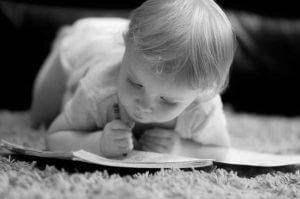
Getting them to express their thankfulness in drawings is a fun activity for this purpose.
Here are 10 prompts to get you started.
Draw something/someone.
- That makes you happy
- You couldn’t live without
- That helps you
- That makes you smile
- You love
- You are thankful for
- You think is kind
- You think is fun
- That makes you feel good
- That makes you laugh
How to Hold a Gratitude Scavenger Hunt
This activity is fun to host anytime, but is even more fun in big groups, like family reunions. Create small groups, each one with a phone/camera.
Usually a group of two to four people is best. Hand each group a sheet to keep track of their photos. These photos do not have to be taken in order.
Gratitude list
- Nature
- Sound
- Taste
- Smell
- A challenge
- Something I’d like to share
- Someone older than me
- Recently discovered or learned
- Shows a vibrant color
- Has words on it
- Makes me feel strong
- Makes me laugh
- Makes me cry
- Represents my country
- Someone I love
Making a Gratitude Countdown Calendar or Chart

Gratitude calendar
This type of calendar can be a wonderful way to countdown to any event or holiday. Here are the directions for how to build a fun “countdown in gratitude” calendar.
Materials Needed
- 1 large empty cardboard box
- seasonal scrapbook paper
- small treat bags
- ribbon
- scrapbook letters (optional)
- seasonal stickers (optional)
- glue
Directions
- Cut the empty box open so it’s flat, like a science project presentation board.
- Cover the inside of the box with the seasonal scrapbook paper.
- Cut the small treat bags in half and discard the tops. Decorate these with the stickers and number the bags with the days of the month, as a countdown.
- Glue the treat bag halves on the board.
- You can make it fancy with the letters “Give Thanks” at the top of the board.
- Glue ribbon around the edges for a more polished look to the calendar.
- It’s ready to use!
Keep track of daily expressions of gratitude leading up to a certain date. On that special day, empty the days and share the expressions with your family. Enjoy the bonding.
An alternative way of utilizing this calendar is by pre-filling the bags with submissions by each family member, for each family member. Each day the family can pull out the daily gratitude and give and receive the love.
Gratitude chart
A brain map or gratitude chart can be a helpful way to brainstorm. Start with a blank sheet of paper and in the middle draw a circle filled with the word “Gratitude“. Draw lines, like spokes on a wheel, from that circle toward the edge of the paper. On each of these spokes write an area of your life. For instance, family, school, home, etc. From each of these spokes, draw more spokes that are things within that area that bring you feelings of gratitude.
You couls also try a Give Thanks poster. On the top of the poster write in big letters, “I am thankful for…” Each day, every family member can write an entry. It will fill up quickly as ideas inspire others. For a twist, come up with a new prompt for each day.
Using Gratitude Rhymes to Teach Kids
Poetry is a colorful way to teach kids about gratitude. Using rhyme can get kids to use their minds to search for more. Being grateful for a car has nothing to do with being thankful for a star, but it is a way of expanding the scope of their gratitude.
Music can be a powerful tool for teaching children. It’s no different when thinking about teaching them about gratitude. There are many artists who use rhyme to make the subject accessible to kids.
The following songs are great options to share with your children.
- “Attitude of Gratitude” written by The Swinging Belles
- “I Am Thankful” by Bubbly Vee is a Thanksgiving song
- “If You’re Happy and You Know It”
- “Attitude of Gratitude” by Zippity 2 Dads
- “Thankful for Your Service” by They Might Be Giants
11 Gratitude Videos for Kids
Kid President’s 25 Reasons To Be Thankful
What Is Gratitude? The Jesse Lewis Choose Love Movement
What Does It Mean to Be Thankful? (for Kids)
An Experiment In Gratitude – The Science Of Happiness
For more videos and talks on gratitude, please see this list.
A Take-Home Message
Teaching and practicing gratitude will empower kids to live happier lives. Gratitude benefits emotional wellbeing by increasing positive emotions (Emmons & McCullough, 2003), enables savoring of experiences (Bryant et al., 2021), and even counters materialism (Polak & McCullough, 2006).
The more parents start to focus on the practice themselves, the more the family will follow that same path. Cheers to building more positive emotion in your home.
For further reading on gratitude:
- Gratitude Meditation: A Simple but Powerful Happiness Intervention
- The Neuroscience of Gratitude and Effects on the Brain
We hope you enjoyed reading this article. Don’t forget to download our three Gratitude Exercises for free.
- Bryant, F. B., Osowski, K. A., & Smith, J. L. (2021). Gratitude as a mediator of the effects of savoring on positive adjustment to aging. The International Journal of Aging and Human Development, 92(3), 275–300.
- Emmons, R. A., & McCullough, M. E. (2003). Counting blessings versus burdens: An experimental investigation of gratitude and subjective well-being in daily life. Journal of Personality and Social Psychology, 84(2), 377-389.
- Halberstadt, A. G., Langley, H. A., Hussong, A. M., Rothenberg, W. A., Coffman, J. L., Mokrova, I., & Costanzo, P. R. (2016). Parents’ understanding of gratitude in children: A thematic analysis. Early Childhood Research Quarterly, 36, 439-451.
- Polak, E. L., & McCullough, M. E. (2006). Is gratitude an alternative to materialism? Journal of Happiness Studies, 7, 343–360.
Let us know your thoughts
Read other articles by their category
- Body & Brain (41)
- Coaching & Application (49)
- Compassion (27)
- Counseling (46)
- Emotional Intelligence (23)
- Gratitude (16)
- Grief & Bereavement (19)
- Happiness & SWB (35)
- Meaning & Values (26)
- Meditation (21)
- Mindfulness (42)
- Motivation & Goals (42)
- Optimism & Mindset (33)
- Positive CBT (24)
- Positive Communication (21)
- Positive Education (41)
- Positive Emotions (28)
- Positive Psychology (33)
- Positive Workplace (38)
- Relationships (31)
- Resilience & Coping (33)
- Self Awareness (21)
- Self Esteem (38)
- Software & Apps (23)
- Strengths & Virtues (28)
- Stress & Burnout Prevention (27)
- Theory & Books (42)
- Therapy Exercises (30)
- Types of Therapy (53)


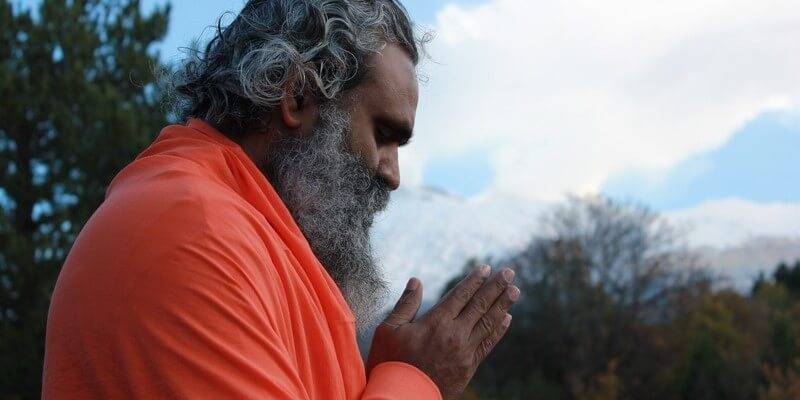
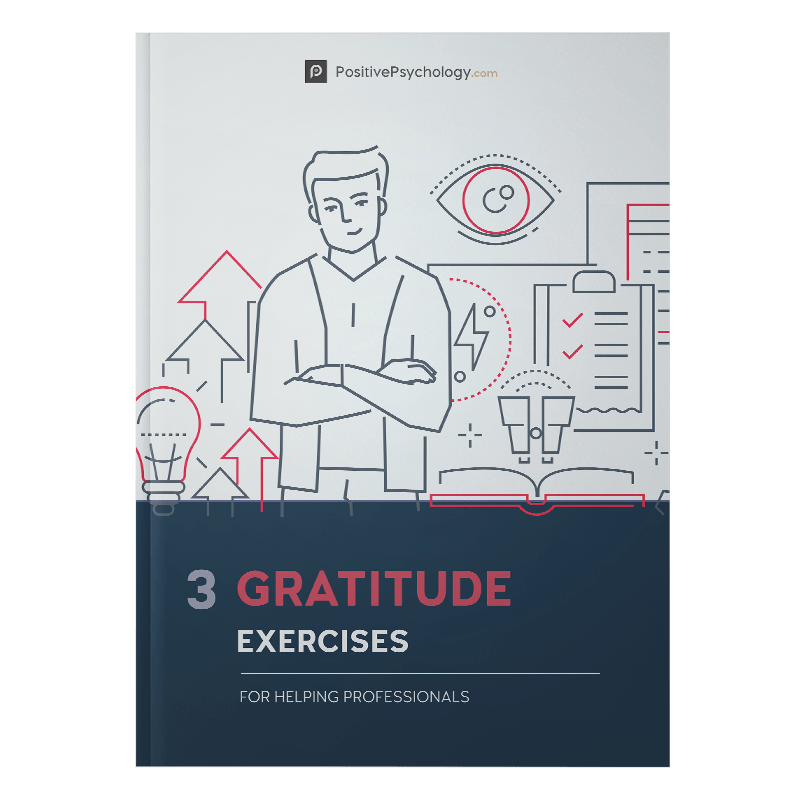
What our readers think
Thanks a lot Kelly!! I was searching for ways to make gratitude a second nature for my kids. U made my day…
Materials are friendly and easy to follow and use
Thanks for your article! Very instructive! I like everything!
Thank you for sharing this piece. It was very helpful now I can do it with my siblings and maybe we an get along well together.
These are so AMAZING and practical! Thank you so much for categorising and sharing these valuable resources promoting such powerful intervention.
WOW!
Nothing else I could think of. Its just simply WOW!
I’m so very pleased that you enjoyed this piece. It was certainly fun to write.
interesting topic … thank you
It’s my pleasure. One of my favorite topics for sure.